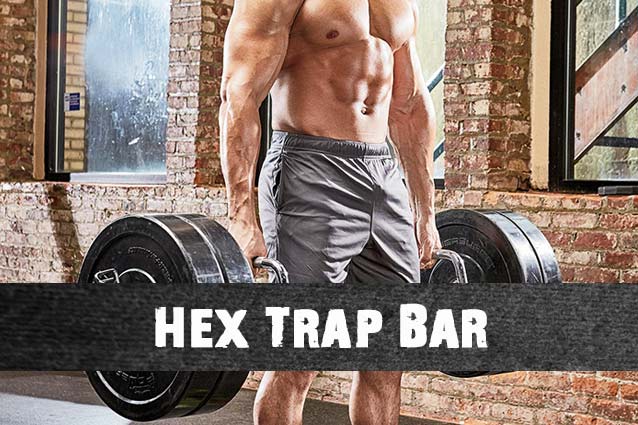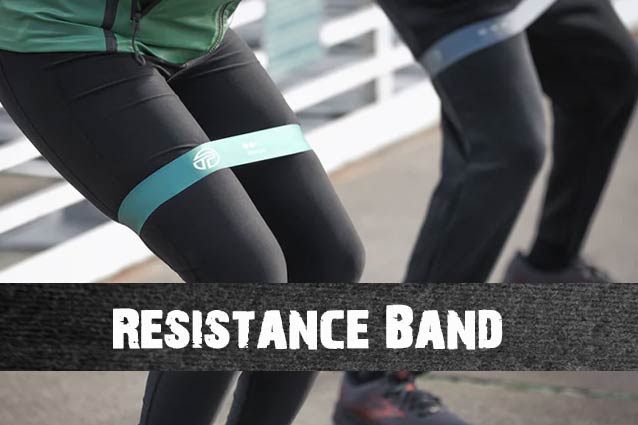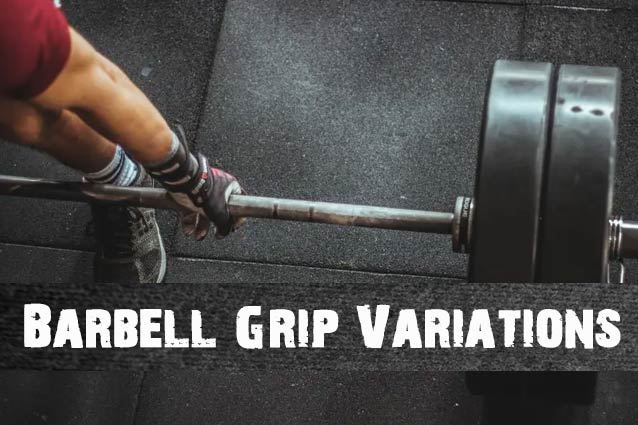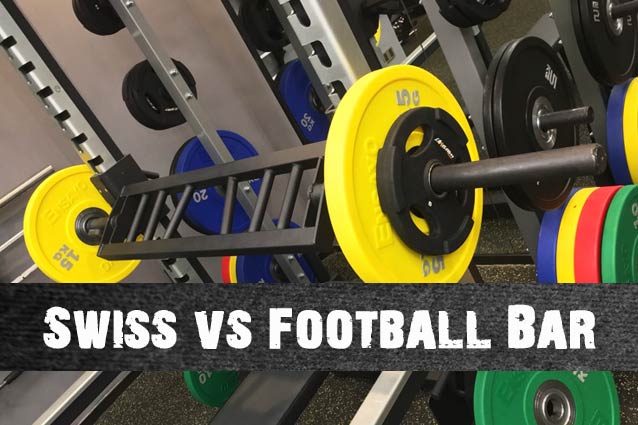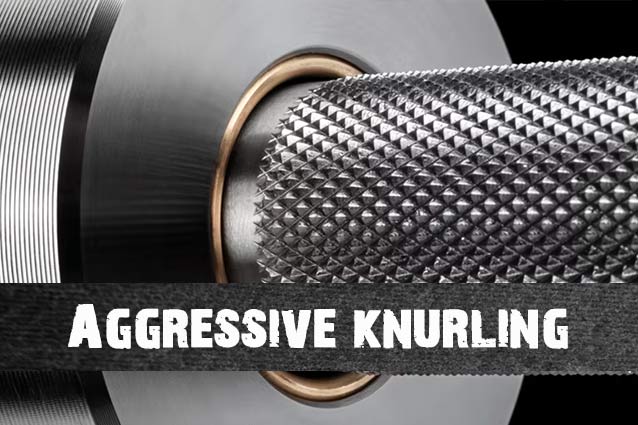If there’s one thing that has been a constant in the world of strength training, it’s innovation.
We’ve seen all kinds of tools and machines that promise maximum results with minimal effort – from kettlebells to resistance bands, the options are seemingly endless.
But among these options is something truly revolutionary: the hex trap bar. This remarkable tool has quickly become popular amongst trainers and athletes who recognize its ability to deliver on both safety and comfort fronts — compared to traditional Barbell deadlifts, this trap bar allows for a low-risk and easy-to-learn practice!
So we ask you, is the hex trap bar really the most innovative in strength training? Discover more about this remarkable device through our comprehensive guide.
Why is a trap bar called a hex bar?
The trap bar was invented by Arthur Jones in the 1970s and patented under the name Power Bar (later changed to Power Rack). The patent expired in 1980 and other companies began manufacturing their own versions of this innovative piece of equipment.
It’s called a hex bar because it has six protrusions that stick out from its center, which resemble the shape of a hexagon.
The bar itself is typically made of steel or cast iron and can be adjusted to change the height of its handles. The user stands inside the hexagon and holds onto the handles for support as he or she lifts weights, such as dumbbells or barbells, off the ground.
The unique shape of the trap bar allows you to lift heavier loads with less stress on your lower back. It also allows you to use your body more efficiently than traditional free weights or straight bars, which can help prevent injuries and improve your overall strength training results.
Is Trap Bar a great weightlifting innovation?
When exercisers first encounter the trap bar in the gym, they may find it a bit peculiar. What is it, exactly? And what fitness goals can it help them achieve?
In fact, the trap bar may just be the greatest weightlifting innovation of the last few decades. Back in 1985, Al Gerard invented the trap bar deadlift as a way to work around his recurring lower back injuries. Since then, more and more weightlifters have embraced it as a replacement for traditional deadlifts.
Personally, I’ve also become a fan of the trap bar, and I think it’s worth discussing its benefits in greater detail.
Potential Issues with Barbell Deadlifts
Here are some potential risks associated with barbell deadlifts:
- Increased risk of lower back injury: Barbell deadlifts require a more forward-leaning position, which puts more stress on the lower back. If the proper form is not maintained, it can lead to lower back injuries.
- Increased risk of knee injury: The barbell deadlift requires a greater range of motion at the knee joint, which can increase the risk of knee injury if proper form is not maintained.
- Greater technical difficulty: Barbell deadlifts are more technically demanding than trap bar deadlifts, and require more practice and skill to perform safely and effectively.
- More demanding on grip strength: With barbell deadlifts, the weight is distributed differently than with trap bar deadlifts, which makes it more challenging on grip strength.
I used to be a big fan of barbell deadlifts for my workouts, but some cases of back injuries caused by the exercise made me realize the potential risks involved. I had to find a safer alternative, and that’s when I discovered the hex bar deadlift.
Trap Bar Deadlift Benefits
The trap bar deadlift is a popular exercise that focuses on your back and lower body. It’s a great alternative to the conventional deadlift.
The benefits of using a trap bar include:
Less strain on your lower back. When lifting weights from the ground, you may have to bend over too much to get the weight off the floor. This can cause strain on your lower back, especially if you’re not used to lifting weights with this type of equipment. A trap bar lets you lift from an upright position and keeps your spine straight so there’s no strain on your back muscles or ligaments.
Experience greater strength and flexibility in your hip and knee joints with a trap bar! Its design allows for an upright posture that facilitates deeper squats, granting you an increased range of motion. If you’re taller than average or have longer legs than other people, the trap bar is perfect as it eliminates awkward positions when picking up heavy loads. Unlock new levels of power today – use the Trap Bar to reach peak fitness potential!
More user-friendly for beginners: The trap bar deadlift is a great exercise for beginners. It’s easier to learn and perform than the traditional barbell deadlift, which can be dangerous if you’re not familiar with it or don’t have the proper form. When performing barbell deadlifts, people tend to lean forward which could lead them into falling down if there is no one around them who can spot them properly. The trap bar deadlift is not like that. It helps in maintaining an upright position throughout the whole workout session without leaning forward or backward even once!
How to use A Trap Bar Correctly
Here are some steps to use a trap bar correctly:
- Start by standing inside the trap bar with your feet shoulder-width apart and your toes pointing forward.
- Grip the handles with both hands and keep your arms straight.
- Brace your core and engage your glutes before lifting the weight.
- Keep your shoulders back and down, and your chest up throughout the movement.
- Drive through your heels as you lift the weight, making sure to maintain proper form and posture.
- Pause briefly at the top of the lift, then lower the weight back down to the ground with control.
- Repeat the movement for your desired number of reps.
It’s important to maintain proper form and posture throughout the exercise to avoid injury. Some key form cues to keep in mind include keeping your back flat, avoiding rounding or arching, and keeping your knees in line with your toes.
Note: If you want to learn more about variations in barbell grip, check out our detailed guide.
Types of Hex Bars
There are several types of trap bars(hex bars) available on the market:
Standard Trap Bar: This is the most common type of trap bar and features a diamond-shaped design with two parallel handles for gripping the weight. It’s often used for deadlifts, shrugs, and other exercises that target the legs and back.
Olympic Trap Bar: This is a heavy-duty trap bar designed for use with Olympic-sized weight plates. It typically features a longer and wider frame than the standard trap bar, which can accommodate larger plates and provide more stability during the lift.
Multi-Grip Trap Bar: This type of trap bar features multiple grip options, including neutral and angled handles, allowing for greater variety in exercise selection and muscle targeting.
Rackable Trap Bar: This is a specialty trap bar designed to be used in a power rack or squat rack. It typically has a shorter frame than a standard trap bar and features built-in handles for easy rack placement and removal.
When choosing a trap bar, it’s important to consider your specific training goals and needs, as well as the quality and durability of the bar itself.
Related: Football Bar vs Swiss Bar – Multi-Grip Bar Tutorial
Factors for choosing a trap bar and the most popular trap bars
When purchasing a Trap Bar, there are several factors that you should consider to ensure you get the right one for your needs. Some of these factors include:
- Weight Capacity: Make sure to choose a trap bar with a weight capacity that can accommodate your maximum lift weight.
- Grip: The grip on a trap bar can vary in thickness and texture. Choose one that feels comfortable and secure in your hands.
- Size: Consider the size of the trap bar, as this will determine how much space it will take up in your workout area. Ensure that it is not too large or too small for your needs.
- Material: Trap bars can be made from different materials, including steel and aluminum. Steel is stronger and more durable, while aluminum is lighter.
- Knurling: Some trap bars have knurling on the handles to provide a better grip. Consider whether you want to knurl and how aggressive you want it to be.
- Price: Trap bars can vary in price depending on the quality and features. Determine your budget and choose a trap bar that fits within it.
- Brand: Choose a reputable brand that offers quality products and good customer service.
Overall, the most important factors to consider when purchasing a Trap Bar are weight capacity, grip, size, material, knurling, price, and brand. Take your time to research and compare different options before making a purchase.
Of course, buying a desired Grap Bar is not an easy task.
We conducted a thorough investigation and compiled a list of the most popular Grap Bars. If you’re unsure, you might want to refer to it:
- Titan Fitness Hex V2
- Rogue TB-2
- Kabuki Trap bar HD
- Prime Fitness Trap Bar
- Eleiko Oppen Trap bar
- Vulcan Strength Ox Bar
Summary
Listen up, fitness fanatics! We’ve got a game-changer for you: the trap bar. With its unique design, this piece of equipment is revolutionizing the weightlifting industry. It offers a natural and stable grip, giving you a range of advantages over traditional straight bar lifting and squatting.
And if you’re someone who suffers from back pain, the trap bar is your new best friend. Its deadlifts will take the stress off your lumbar spine and give you a more comfortable workout. Plus, the trap bar is easy to learn and master, making it a great option for beginners.
No wonder fitness guru Michael Boyle has said: “The Trap Bar ( or Hex Bar) might be the greatest weight room innovation in 50 years. They are inexpensive and decrease both torque and shear. Barry Ross had it right in the 90’s. Took me a while to embrace it but he was right.”
So what are you waiting for? Give the trap bar a try and experience these amazing benefits for yourself!

